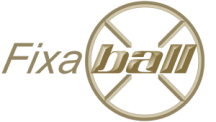
Technicals: Fastener Thread Types
Share
Technicals: Fastener Thread Types
Around 400BC, it has been suggested that screw threads were first introduced by Archytas of Tarentum, a contemporary of Plato. Experts in the product industry have long been aware of the widespread use of wooden screws by the first century 100BC throughout the Mediterranean region. These screws were essential in screw presses, used for the production of olive oil and grape juice in winemaking.

While metal screws were scarce in Europe before the 15th century and mainly produced for specific purposes, the 16th century saw the emergence of handheld screwdrivers, referred to as turnscrews in English or tournevis in their original French name. It wasn't until 200 years later, when threaded fasteners became standardized, that the use of screwdrivers became more widespread. The advent of the 15th century also saw screws being utilized by Johann Gutenberg in the fastenings of his printing presses.

Over time, this trend continued to gain momentum, with screws being incorporated into various items such as clocks and armour. Though improvements were made over time, the creation of screw threads still required manual labour and skill. In 1750, Antoine Thiout created a more efficient screw-driven lathe, making semi-automatic movement of the tool carriage possible. As industry advancements demanded finer screw threads, Jesse Ramsden developed the first successful screw-cutting lathe in 1770. While demand for threaded fasteners continued to grow, the lack of standardization for threads caused issues with interchangeability.

The first standardized thread, known as the British Standard Whitworth (BSW), was developed by Sir Joseph Whitworth, an English engineer, in 1841 to address a prevalent issue. The British Standard Fine (BSF) thread was introduced in 1908 to accommodate certain applications that required a finer thread compared to the coarse nature of the original Whitworth thread. This new standard incorporated a thread angle of 55°, with varying depth and pitch depending on the thread diameter. Interestingly, spanners for Whitworth bolts denote the bolt size, not the distance across the flats of the screw head. While the use of Whitworth screw sizes is still prevalent in repairing old machinery and when a coarser thread is needed, it is most commonly used in UK scaffolding. Additionally, it can be found in the standard tripod thread for cameras, with a 1/4" Whitworth pitch being used for smaller cameras.

The British Association (BA) screw threads were established in the United Kingdom and were later adopted as a standard. Named after the British Association for Advancement of Science, screws were designated with numbers such as "2BA" and "4BA", though odd numbers were rarely used except in equipment made prior to the 1970s for telephone exchanges within the UK. These odd-numbered BA screws may have been utilized to reduce theft. Specifications for BA threads can be found in British Standard BS 93:1951, titled "Specification for British Association (B.A.) screw threads with tolerances for sizes 0 B.A. to 16 B.A."

In 1864, William Sellers proposed a 60 degree thread form with various thread pitches for different diameters in America. This proposal led to the creation of the Unified Thread Standard (UTS), which is widely used in the United States, Canada, and some other countries. Most sizes of screws have multiple thread pitches available, such as the Unified Coarse Thread (UNC or UN) and the Unified Fine Thread (UNF).

During the same timeframe, continental Europe began to adopt metric thread standards, resulting in various thread flank angles being implemented.
In 1876, Switzerland began developing a metric thread with an angle of 47.5 degrees for the clock screw market, followed by Germany's Leopold Loewenherz in 1894 with a flank angle of 53 degrees 8 minutes. A metric standard thread was later formed from these Swiss and German threads in 1919 by the American, British, and French, though it was not officially standardized until the International Standards Organisation (ISO) was re-founded in 1947. The ISO's work eventually led to the promotion of the 60-degree flank angle with flat crests and rounded roots in the ISO standard metric thread in 1960.


https://www.linkedin.com/pulse/technicals-fastener-thread-types-samuel-ball-hornblow-uqtwe
